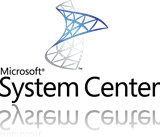Microsoft
 Written by Sam McGeown
on 31/8/2011
Written by Sam McGeown
on 31/8/2011 It seems that despite my previous
It seems that despite my previous
 Written by Sam McGeown
on 29/6/2011
Written by Sam McGeown
on 29/6/2011It’s a fairly common requirement – setting up a guest WiFi network that is secure from the rest of your LAN. You need a secure WLAN access for the domain laptops which has full access to the Server and Client VLANs, but you also need a guest WLAN for visitors to the office which only allows internet access. Since the budget is limited, this must all be accomplished via a single Access Point – for this article, the access point is a Cisco WAP4410N.
 Written by Sam McGeown
on 14/4/2011
Written by Sam McGeown
on 14/4/2011 Configuring WSS or SharePoint Services for a small client is a pretty effective way of getting a document management solution for a reasonable cost point. One of the limitations that caused headaches was that it used to have a maximum storage of 4GB, which was the database limit. If you wanted to go larger, you would need either a) multiple SPS installations, b) a full version of SQL server, or c) the full version of MOSS. None of those solutions are particularly cost effective, and for a small company cost is king.
Configuring WSS or SharePoint Services for a small client is a pretty effective way of getting a document management solution for a reasonable cost point. One of the limitations that caused headaches was that it used to have a maximum storage of 4GB, which was the database limit. If you wanted to go larger, you would need either a) multiple SPS installations, b) a full version of SQL server, or c) the full version of MOSS. None of those solutions are particularly cost effective, and for a small company cost is king.
 Written by Sam McGeown
on 24/3/2011
Written by Sam McGeown
on 24/3/2011 SSTP or SSL VPN connections are great for people working on client sites or behind very restrictive firewalls – they only require HTTPS (port 443) to be open to be able to connect. Unfortunately, you need to be running Windows 7 or Server 2008 (or newer) in order to make use of them. Threat Management Gateway 2010 is one option for an SSL VPN endpoint.
SSTP or SSL VPN connections are great for people working on client sites or behind very restrictive firewalls – they only require HTTPS (port 443) to be open to be able to connect. Unfortunately, you need to be running Windows 7 or Server 2008 (or newer) in order to make use of them. Threat Management Gateway 2010 is one option for an SSL VPN endpoint.
SSTP VPN Requirements
- Clients must be Windows 7/Server 2008 or newer
- Certificate – either commercial or an internal Certificate Authority
- Published CRL – SSTP clients check for the Certificate Revocation List of the CA
- If you already have an SSL listener (e.g. for Exchange publishing rules) then you need a dedicated IP address for the SSTP connection
TMG is configured as a “back-firewall” in this environment, with an adaptor in the LAN and one in the Perimeter (DMZ). The DMZ has a NAT relationship to the External public IPs.
 Written by Simon Eady
on 24/3/2011
Written by Simon Eady
on 24/3/2011 I am a firm believer in trying to keep things simpler where ever possible (but not for the sake of it) In years gone by I have heard many admins lament about the complexities of deploying IIS to work alongside third party plugins such as PHP. I can remember numerous occasions where I have wrestled with the config and “best practice”.
I am a firm believer in trying to keep things simpler where ever possible (but not for the sake of it) In years gone by I have heard many admins lament about the complexities of deploying IIS to work alongside third party plugins such as PHP. I can remember numerous occasions where I have wrestled with the config and “best practice”.
I am however glad to say finally Microsoft have taken notice of this and produced a very simple and effective deployment toolkit.
 Written by Sam McGeown
on 22/3/2011
Written by Sam McGeown
on 22/3/2011
Having recently managed several Exchange 2010 migration projects, one of the best new features which really sells it to systems administrators is the Online Archive. “No more managing PST files? When can we have it installed by?”
The problem is, once they’ve purchased licensing for Exchange 2010 and installed and configured the server, migrated the users’ mailboxes and decommissioned the old Exchange 2003 server, the Online Archive feature is not available. The users have been enabled, and as of SP1 we have a separate Archive mailbox database configured on slow (cheap) storage, but the Online Archive is nowhere to be found in Outlook. If the users log on using OWA, lo and behold the Online Archive is available.
 Written by Sam McGeown
on 21/3/2011
Written by Sam McGeown
on 21/3/2011
While using the New-TestCasConnectivityUser.ps1 script to create a test user for Exchange 2010’s connectivity testing, I ran into an issue:

Oddly enough, that OU does exist (as it will by default on any Windows Domain!) and the password complexity more than satisfied the complexity requirements. The issue is simple enough to fix, I opened the script in notepad and found the line beginning “new-mailbox” – and deleted the parameter “–OrgainisationalUnit:$OrganistationalUnit”. This means the new user defaults to the default OU – Users!
 Written by Sam McGeown
on 6/1/2011
Written by Sam McGeown
on 6/1/2011 Getting a SCOM 2007 R2 SCOM agent on TMG is a useful way of monitoring TMG, especially with the SCOM TMG Management Pack – it’s not exactly “out-of-the-box” functionality though, with many sources I’ve read simply stating that it can’t be done. There are some half-working solutions I’ve seen, but nothing that worked for me.
Getting a SCOM 2007 R2 SCOM agent on TMG is a useful way of monitoring TMG, especially with the SCOM TMG Management Pack – it’s not exactly “out-of-the-box” functionality though, with many sources I’ve read simply stating that it can’t be done. There are some half-working solutions I’ve seen, but nothing that worked for me.
The process involves simply opening the correct ports and protocols between the TMG servers and the SCOM management servers, which after a few attempts watching the live logs, I found.
 Written by Sam McGeown
on 24/11/2010
Written by Sam McGeown
on 24/11/2010Today I was configuring a new FTP server based on IIS7 (well, 7.5 technically as it’s a Server 2008 R2 host), and I wanted an easy way to add and remove allowed IP addresses based on either an XML config file or a CSV import. Customers’ IP addresses are added or removed regularly, but I didn’t want to have to update their details twice, once on the server and once in the documents.
 Written by Sam McGeown
on 8/11/2010
Written by Sam McGeown
on 8/11/2010In this post I will be installing a TMG Array as a “back firewall” behind a hardware firewall. The Array will consist of two virtual servers, TMG01 and TMG02 which each have 3 NICs. One NIC will be dedicated to the LAN network, accessible internally. One NIC will be dedicated to the DMZ network, accessible to the outside world on a static mapped IP. The third NIC will be a dedicated intra-array communications NIC as per Microsoft’s recommendation.
